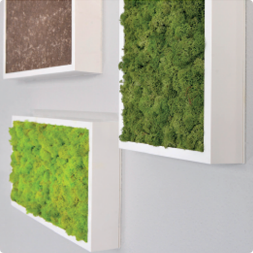Ficus Lyrata Bush
$69.00 – $209.00
The Ficus lyrata bush, commonly known as the Fiddle Leaf Fig, is a popular indoor plant cherished for its large, violin-shaped leaves. With its dramatic and lush foliage, it adds a touch of elegance to any space. Thriving in bright, indirect light, this Ficus variety brings a sense of natural beauty and sophistication to interior landscapes.
If you do not have a bright, sunny spot – on a patio or adjacent to an east, west, or (preferably) south window – please consider another plant from our low-light selections. All Fiddle Leaf figs prefer bright light.
Plant Details
| Size | 2-3', 3-4', 4-5', 5-6+' |
| Difficulty | Moderate Care Level |
| Light | Bright Indirect Light |
| Pet Friendly | This plant may be toxic to pets |
Our 30-Day Guarantee
Description
The Fiddle Leaf Fig is a really great plant for beginners and experts alike, and designers will appreciate what it can do in a photo. Here’s what you need to know if you’re getting a Ficus Lyrata:
Watering
This plant is a moderate to heavy drinker, and can go for 2+ weeks without watering with the proper sub-irrigation system, but we suggest you check it weekly during the first 6-8 weeks after you get it and during hot summer months. See our watering guide for more information.
Light
Next to watering, having adequate light is the most significant factor keeping your Lyrata happy inside. Your best placement is near a window where the plant can get some sun light – east-, south- and west-facing windows are best. It can also thrive in a room with strong ambient light. If you want a good, sustainable indoor plant and don’t have good light, this is not the plant for you – unless you’re up for moving it for frequent trips to better lit areas.
Nutrition
The Fiddle Leaf Fig likely will not need to be fed during the first 6 months after it has shipped. During this time, it will use the residual nutrients from nursery production. After 12 months, it can be fed quarterly with a complete fertilizer formulated for interior plants. If your Lyrata is positioned on a porch in the south, it may need supplemental nutrition sooner than 12 months. Keep an eye on the newer leaves – not the emerging ones; if the new leaves are yellow and the veins prevalent, it is possible it needs some nutrients. Please refer to our nutrient guide for details.
Cleaning
Here’s one of the greatest benefits of this plant – its large leaves are easy to clean and, overall, there are fewer leaves than many other interior plants. Simply wiping the leaves with a wet cloth usually does the trick. For spots where something else (besides dust) has landed on your plant, use a mild soapy solution to wet the cloth; then wipe.
Pruning
Many Fiddle Leaf Fig fans love to let this plant grow in all sorts of funky shapes. If that’s not your style, and you want to maintain the plant’s height and girth, pruning cuts can be made just above any node (aka – right about a where a leaf attaches to a stem). This will reduce the size of the plant and promote new growth from the point where the cut was made. You can also trim or snap off leaves that have run their course.
Bugs
Here’s another plus, this plant is not a big target for pests. Scale, mealy bugs, and mites sometimes jump on, but they’re easily controlled by wiping the infested area with a soapy solution. It can take several intermittent cleanings to rid the plant of the pests.
Trouble
Here are a few warning signs that your Ficus Lyrata is getting the funk:
- Leaf drop – If the lower leaves start to droop and then drop, it’s either :
- not getting enough light
- it’s getting too much water or
- (you guessed it), it’s not getting enough water
Or…if you moved it from one light extreme to another, it could shed leaves. The most likely issues (#’s 1, 2, and 3) are easily correctable.
- Brown leaf margins – This is most likely from not enough light and under-watering.
- Brown spots and mushy leaf spots – This might be from too much water or exposure to cold temperatures.
The best part about any of the above is that they’re easily corrected. The key, however, is recognizing the signs early and making the adjustment before too much damage occurs.
Warning
It has been reported that the sap from a Ficus plant is poisonous to dogs, cats, and horses. So, if you have a dog, cat, or horse, don’t let them ingest the sap. It’s also been reported that the sap can cause allergic reactions for people too. If you get sap on your skin, wash it off and wipe the area with rubbing alcohol; if it gets in your eyes, flush your eyes with clean water for 15 minutes. If none of this helps, call a doctor.
You may also like…
There are no reviews yet.



















Customer Reviews for
Ficus Lyrata Bush